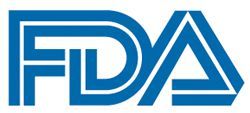FDA Grants Orphan Drug Designation to ABM-1310 for BRAF V600–Mutant Glioblastoma
The FDA has granted an orphan drug designation to ABM-1310 for the treatment of patients with BRAF V600–mutant glioblastoma.

The FDA has granted an orphan drug designation to ABM-1310 for the treatment of patients with BRAF V600–mutant glioblastoma, according to an announcement from ABM Therapeutics.1
ABM-1310 is an oral, selective BRAF inhibitor that has high water solubility, and high blood–brain barrier permeability. The agent is under evaluation in phase 1 trials in the United States and China for patients with BRAF V600–mutant advanced solid tumors.
Interim results from the ongoing, first-in-human, United States study were presented at the 2023 ASCO Annual Meeting.2 The multicenter, open-label trial (NCT04190628) enrolled patients with advanced BRAF V600–mutated solid tumors, including those with active brain metastasis from solid tumors or primary malignant brain tumors.
To be eligible for enrollment, patients had to have a locally advanced or metastatic solid tumor that progressed on at least one line of prior systemic therapy, for which no standard therapy exists, or for which standard therapy is not an option per the patient or treating physician. Prior BRAF/MEK inhibition was allowed, and any number of prior therapies could’ve been administered prior to enrollment.3
In dose-escalation part A, patients received between 25 mg and 250 mg of ABM-1310 twice daily.2 In dose-escalation part B, patients received either 100 mg (n = 3) or 200 mg (n = 3) of ABM-1310 twice daily in combination with the MEK inhibitor cobimetinib (Cotellic) at 60 mg once daily on days 1 through 21 every 4 weeks.
The primary objectives of the study were to determine the maximum-tolerated dose and recommended phase 2 dose of ABM-1310 with or without cobimetinib. Secondary objectives included establishing safety and tolerability; pharmacokinetics; and preliminary efficacy. Dose-limiting toxicities (DLTs) were evaluated during the first cycle by a 3+3 design.
As of November 28, 2022, 20 patients received ABM-1310 monotherapy across six dose levels in part A: 25 mg (n = 3); 50 mg (n = 3); 100 mg (n = 4); 150 mg (n = 4); 200 mg (n = 4); 250 mg (n = 2). Most patients were male (65%), and the median age was 57.5 years.
The results indicated that all patients experienced adverse effects (AEs), most commonly skin rash (40%) and QT prolongation (20%). Three patients had drug-related grade 3 or greater AEs including nausea/vomiting, QT prolongation, and rash, and two had drug-related serious AEs (SAEs) of nausea/vomiting and creatinine increase.
Among 16 patients who were evaluable for efficacy, two––one with pleomorphic xanthoastrocytoma and one with glioblastoma––had a partial response and eight had stable disease as their best response per RECIST or RANO criteria.
In Part B, four patients experienced AEs and drug-related AEs of rash and QT prolongation with the combination of ABM-1310 and cobimetinib. However, no SAEs occurred.
Among three evaluable patients, one with melanoma had a PR and one had SD as their best response. No confirmed DLTs were reported in dose-escalation part A or B, although several patients required treatment interruption and subsequent dose reduction with ABM-1310.
Notably, no patients discontinued the study early for safety or tolerability reasons, and no drug-related deaths occurred.
Additionally, investigators noted a linear dose-proportional relationship between ABM-1310 drug exposure and dosage.
Another phase 1 trial has also launched in China specifically for patients with glioblastoma multiforme.
References
- US FDA grants orphan drug designation to ABM-1310 for the treatment of patients with glioblastoma harboring BRAF V600 mutation. News release. ABM Therapeutics. August 2, 2023. Accessed August 3, 2023. https://www.prnewswire.com/news-releases/us-fda-grants-orphan-drug-designation-to-abm-1310-for-the-treatment-of-patients-with-glioblastoma-harboring-braf-v600-mutation-301890187.html
- Piha-Paul SA, Nagpal S, Weise AM, et al. A phase 1, multicenter, open-label study of a new BRAF inhibitor ABM-1310 in adult patients (pts) with BRAFv600-mutated solid tumors. J Clin Oncol. 2023;41(suppl 16):3098. doi:10.1200/JCO.2023.41.16_suppl.3098
- Safety and tolerability of ABM-1310 in patients with advanced solid tumors. ClinicalTrials.gov. Updated August 1, 2023. Accessed August 3, 2023. https://classic.clinicaltrials.gov/ct2/show/NCT04190628



